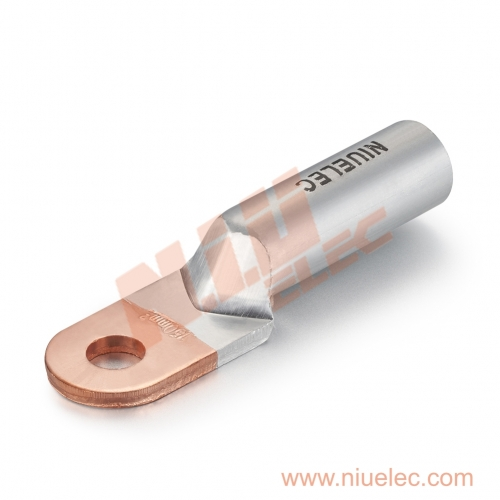For many parents, the bathroom can be a daily battleground. From coaxing reluctant toddlers to brush their teeth to managing the inevitable mess, establishing healthy oral hygiene habits in children requires patience, persistence, and the right tools. But what if a simple bathroom accessory could do more than just hold toothbrushes? What if it could actively contribute to your child's safety, foster their independence, and even instill early lessons in environmental responsibility? The humble bathroom toothbrush holder, when thoughtfully designed with children in mind, can transform a mundane routine into a positive, empowering experience. As consumers become more discerning, the demand for products that are not only functional but also safe, eco-conscious, and child-centric is growing, influencing even how a toothbrush holder supplier approaches design and manufacturing. A toothbrush holder supplier now has the unique opportunity to create innovative designs that cater to these growing needs, offering solutions that are practical yet impactful. This isn't just about keeping countertops tidy; it's about creating a micro-environment that supports a child's holistic development. Let's explore the key dimensions that elevate a simple storage item into a guardian of your child’s growth and a stepping stone towards a greener lifestyle.
Table of contents:
Material Safety: The Uncompromised Foundation of Child-Friendly Design
Manual Dispensing Design: Empowering Kids, Protecting the Planet
Intuitive Usability: Crafting a Human-Centered Experience for Children
The Power of Playful Design: Igniting Imagination and Eco-Consciousness
Championing Hygiene and Health: Elevating Family Well-being
The Educational Dimension: Nurturing Values Through Everyday Objects
Material Safety: The Uncompromised Foundation of Child-Friendly Design
When it comes to products designed for children, material safety is non-negotiable. Little ones are inherently curious; they touch, taste, and explore everything within reach. This makes the composition of items they interact with daily, like a bathroom toothbrush holder, critically important. The journey to ensuring a safe product begins at the source – the materials used in its creation.
Sourcing Non-Toxic, Harmless Materials: Responsible manufacturers prioritize materials like high-quality ABS (Acrylonitrile Butadiene Styrene) and PC (Polycarbonate). These durable plastics, when sourced and manufactured to high standards, should be certified free of harmful substances like BPA, phthalates, and heavy metals (e.g., lead, cadmium, mercury). BPA, linked to various health concerns, is especially important to avoid in children's products. Using rigorously tested, non-toxic materials ensures parents can trust that items their child uses daily won't leach harmful chemicals.
Resilience Against Degradation: Children's bathroom accessories face tough conditions: moisture, temperature changes, and rough handling. Materials should resist high temperatures and corrosion, not just for durability but also to prevent harmful microparticles from forming as they break down. Stable materials ensure the toothbrush holder remains safe and hygienic over time, avoiding hidden risks from degradation.
The Assurance of Environmental Certifications: Trusted products often carry certifications from independent testing bodies (e.g., RoHS, REACH) that confirm they meet strict safety and environmental standards. For sensitive individuals, including children or pregnant women, these certifications provide added reassurance, showing the product has been thoroughly tested and is safe for family use.

Manual Dispensing Design: Empowering Kids, Protecting the Planet
In an age dominated by electronics, the simplicity of a manual design for a children's toothpaste dispenser offers distinct advantages, particularly concerning safety and environmental impact.
Eliminating Electrical Hazards and Radiation: Young children often don’t recognize the dangers of electrical appliances, especially in wet spaces like bathrooms. A manual toothpaste dispenser, with no batteries or power needed, eliminates the risk of electric shock or water damage to electronics. Additionally, while small, some electronic devices emit electromagnetic fields. A mechanical system avoids this completely, giving parents peace of mind.
Championing a Low-Carbon, Battery-Free Lifestyle: Disposable batteries pose a serious environmental risk, with heavy metals and chemicals that can pollute soil and water. Choosing a battery-free, manual toothbrush holder helps reduce this impact. It’s a step towards a greener lifestyle, teaching kids early that not every convenience requires disposable energy. This simple choice reduces waste and promotes sustainability.
Fostering Independence through Simplicity: A well-designed manual toothpaste squeezer is often easier for children to use than a complex electronic gadget. Simple mechanisms, like a press or lever, are intuitive for little hands and encourage kids to take charge of their tooth-brushing routine. Successfully dispensing their own toothpaste builds confidence and fosters independence—key parts of their development.
Intuitive Usability: Crafting a Human-Centered Experience for Children
Beyond safety, the usability of a product is paramount for children. If a tool is cumbersome or difficult to operate, a child will quickly lose interest or become frustrated. A thoughtfully designed bathroom toothbrush holder considers the unique needs and abilities of its young users.
Effortless Operation for Eager Brushers:
The "one-press-and-go" principle for toothpaste dispensing is ideal for children. A mechanism that requires minimal force and provides a consistent amount of toothpaste makes the process straightforward and enjoyable. When children can operate the dispenser themselves without struggle, they are more likely to be enthusiastic about brushing. This transforms a potential chore into an engaging activity, making the morning and evening routine smoother for everyone.
Universal Compatibility and Resourcefulness:
Children’s preferences can change, and families often use different brands or sizes of toothpaste and toothbrushes. A versatile bathroom toothbrush holder that accommodates various standard toothbrush and toothpaste tube sizes is a practical and economical choice. This adaptability prevents the frustration of finding out a new toothpaste tube doesn't fit, and it avoids the waste associated with needing to purchase specialized products or discard a perfectly good holder due to incompatibility. This also resonates with the idea of resourcefulness, a valuable lesson in sustainability.
Child-Centric Ergonomics and Accessibility:
The placement and design of the holder should allow children to access their toothbrush and toothpaste independently. Wall-mounted designs with strong, reliable suction cups or adhesive can be installed at an appropriate height for a child. This empowers them to manage their own oral care without needing to ask for help, reinforcing their sense of autonomy. The design should also ensure toothbrushes are easy to retrieve and replace, even for small, less coordinated hands.
The Power of Playful Design: Igniting Imagination and Eco-Consciousness
Aesthetics play a surprisingly significant role in engaging children. A bathroom toothbrush holder with a fun, appealing design can capture a child's imagination and make the entire tooth-brushing experience more inviting.
Appealing Aesthetics to Motivate and Inspire: Designs with friendly animal shapes, like a fish mouth dispenser, or featuring cartoon elements instantly grab a child's attention. When kids enjoy the look of their toothbrush holder, they interact with it more positively and consistently. This can even make brushing feel more playful and fun.
Making Environmentalism Tangible and Fun: Clever designs can introduce environmental concepts. For example, a dispenser that uses just the right amount of toothpaste links to the idea of not wasting resources. A fun design makes the experience memorable, helping kids develop positive associations with eco-friendly habits early on. It shows that being eco-conscious can be engaging and enjoyable.
Visually Safe and Soothing: Colors and finishes matter. Soft, soothing colors are ideal for children's products, and all paints or coatings should be non-toxic, durable, and safe—even if a child explores it with their mouth. This focus on safety completes the design of a truly child-friendly product.
Championing Hygiene and Health: Elevating Family Well-being
A primary function of any bathroom toothbrush holder is to promote hygiene. For children, whose immune systems are still developing, minimizing the spread of germs is particularly crucial.
Preventing Cross-Contamination with Smart Storage:
Effective toothbrush storage solutions provide individual compartments or adequate spacing for each family member's toothbrush. This significantly reduces the risk of bristles touching and cross-contaminating, which is a common way germs can spread within a household. Keeping toothbrushes separate and upright also allows them to air dry properly, inhibiting bacterial growth.
The Importance of Easy Cleaning:
Bathroom environments are prone to moisture and soap scum, which can become breeding grounds for bacteria if not cleaned regularly. A bathroom toothbrush holder with a detachable structure, or one made from smooth, easy-to-wipe surfaces, simplifies the cleaning process. Parents can easily disassemble the unit, wash it thoroughly, and ensure it remains a hygienic place to store oral care tools. This ease of maintenance is key to upholding a healthy bathroom environment.
Broader Impacts on Household Cleanliness and Resource Use:
A well-organized bathroom, facilitated by tools like a functional toothbrush holder, contributes to overall household cleanliness. When toothpaste is dispensed neatly and toothbrushes are stored tidily, there's less countertop clutter and mess. This can even indirectly lead to more conscious use of resources, such as less water needed for cleaning up spills and potentially reduced reliance on harsh cleaning agents.
The Educational Dimension: Nurturing Values Through Everyday Objects
Surprisingly, even a small bathroom accessory can serve as an educational tool, helping to cultivate important life skills and values in children.
Fostering Responsibility and Self-Care: Giving a child their own toothbrush holder and an easy-to-use dispenser helps build a sense of ownership and responsibility. They learn to care for their belongings and manage part of their personal care routine. This "I can do it myself" attitude boosts self-esteem and encourages a proactive approach to health and hygiene.
Lessons in Conservation and Mindful Consumption: Many manual toothpaste dispensers are designed to release just the right amount of toothpaste, reducing waste. This teaches children to use only what they need and highlights the importance of conserving resources. Using a reusable holder instead of disposable options also reinforces the idea of reducing waste. These small daily habits can shape a child’s understanding of mindful consumption.
Strengthening Parent-Child Bonds Through Shared Routines: Tooth-brushing, made easier with engaging tools, can become a bonding moment between parents and children. Parents can guide their kids, talk about the importance of brushing, and even add stories or songs. These shared moments reinforce good habits and strengthen the parent-child bond, turning a daily task into quality time. Retailers and buyers often seek toothbrush holders with thoughtful design elements that address these needs, which are increasingly in demand.
Choosing a toothbrush holder for your child is more than just about looks or storage; it’s a chance to prioritize their health and safety with non-toxic, battery-free designs. It also encourages independence with easy-to-use, fun features and introduces them to eco-friendly living. Brands like Huamili cater to these needs with products like their child-friendly manual toothbrush rack and toothpaste squeezer. For larger needs, such as schools or daycare centers, toothbrush holder boxes wholesale options are also available, making it easy to provide safe and practical solutions for multiple children. These items combine engaging designs with safety and environmental responsibility, showing how everyday tools can support a child’s growth and well-being. With the right choice, a simple bathroom item can help raise healthy, happy, and mindful kids.














